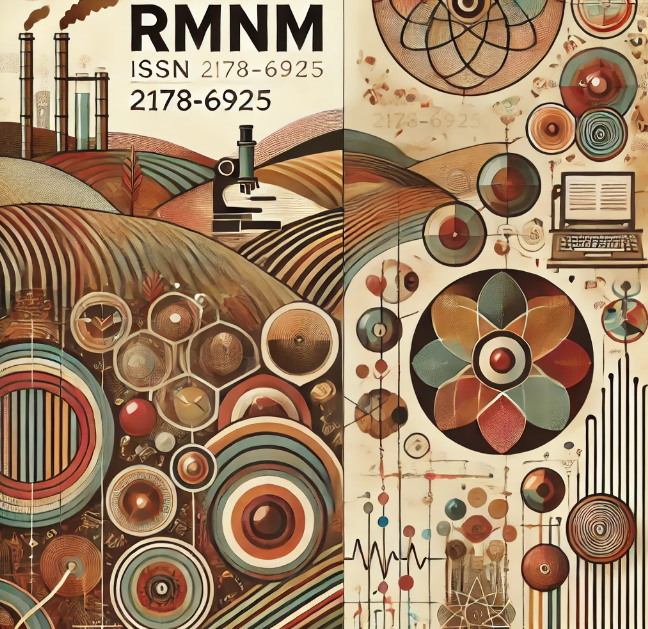MATERNAL MORTALITY
ANALYSIS OF INCIDENCE AND EPIDEMIOLOGY BETWEEN 2011 AND 2021 IN CASCAVEL-PR
DOI:
https://doi.org/10.61164/rmnm.v6i1.2303Keywords:
KEYWORDS: maternal mortality, maternal death, live-births.Abstract
Introduction: around 95% of maternal deaths worldwide could have been avoided if health services expanded women's sexual and reproductive rights, guaranteeing safe care at all times during pregnancy, childbirth and the postpartum period. Theoretical basis: Maternal mortality refers to any death that occurs during the gestational period or after 42 days of its end, regardless of location or duration, with the main cause being the condition. Strategies were developed to reduce maternal mortality and increase understanding of the social determinants that lead to the deaths of these patients. From this point on, maternal mortality began to be understood as an indicator of social development and its reduction was included as one of the goals of the Millennium Development Goals (MDG) and Sustainable Development Goals (SDG). Methodology: This article is exploratory, descriptive, retrospective in nature, through data collection on the public page of the Department of Informatics of the Unified Health System (DATASUS). Analysis and discussion of results: It was observed that, in short, deaths occurred in the postpartum period (71.42%); no hospital (100%); the age group from 30 to 39 years old predominates (71.42%); of women with 8 to 11 years of education (42.75%); married, (35.71%); and white, (64.28%). Conclusion: the maternal mortality rate in Cascavel-PR meets the Brazilian target and is evidenced by white women, aged 30 to 39 years, married, with up to 11 years of schooling, whose death is due to direct or indirect causes equally, during the postpartum period of cesarean deliveries in a hospital environment. KEYWORDS: maternal mortality, maternal death, live-births.
References
FUNDAÇÃO OSWALDO CRUZ. Instituto Nacional de Saúde da Mulher, da Criança e do Adolescente Fernandes Figueira. Portal de Boas Práticas em Saúde da Mulher, da Criança e do Adolescente. Postagens: Tendências na Mortalidade Materna 2000-2020. Rio de Janeiro, 08 mar. 2023. Disponível em:
LAURENTI R, JORGE MHPDM & GOTLIEB SLD. A mortalidade materna nas capitais brasileiras: algumas características e estimativa de um fator de ajuste. Revista Brasileira de Epidemiologia, 2004; 7, 449-460.
MARTINS ACS, SILVA LS. Epidemiological profile of maternal mortality. Rev Bras Enferm [Internet]. 2018;71(Suppl 1):677-83.
MASCARELLO, K.C.; HORTA, B.L.; SILVEIRA, M.F. Maternal complications and cesarean section without indication: systematic review and meta-analysis Rev Saúde Pública. 2017;51:105.
ORGANIZAÇÃO MUNDIAL DA SAÚDE. Classificação estatística internacional de doenças e problemas relacionados à saúde. Décima Revisão (CID-10). 8.a ed. São Paulo: Edusp; 2000.
RIQUINHO DL & CORREIA SG. Mortalidade materna: perfil sócio-demográfico e causal. Revista Brasileira de Enfermagem, 2006; 59, 303-307.
SOUZA JP. A mortalidade materna e os novos objetivos de desenvolvimento sustentável (2016-2030), 2015.
UNITED NATIONS. The Millennium Development Goals Report 2014 [Internet]. New York: United Nations; 2014 [cited 2015 Oct 5]. Available from:
http://www.un.org/millenniumgoals/2014%20MDG%20report/MDG%202014%20English%20web.pdf
UNITED NATIONS. Sustainable Development Goals [Internet]. New York: United Nations; 2015 [cited 2015 Oct 5]. Available from: https://sustainabledevelopment.un.org
WORLD HEALTH ORGANIZATION. Trends in maternal mortality 2000 to 2020: estimates by WHO, UNICEF, UNFPA, World Bank Group and UNDESA/Population Division. Geneva: World Health Organization; 2023. Licence: CC BY-NC-SA 3.0 IGO. Disponível em: <https://www.who.int/publications/i/item/9789240068759>.
Downloads
Published
How to Cite
Issue
Section
License
Copyright (c) 2024 Revista Multidisciplinar do Nordeste Mineiro

This work is licensed under a Creative Commons Attribution-NonCommercial-ShareAlike 4.0 International License.




